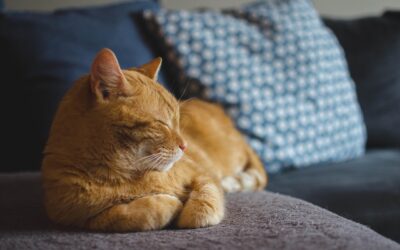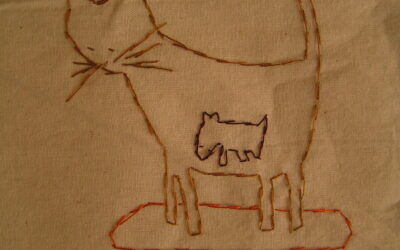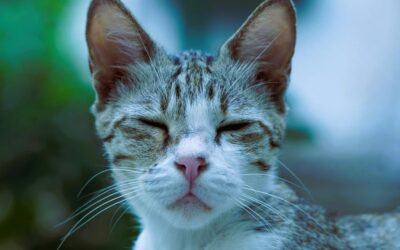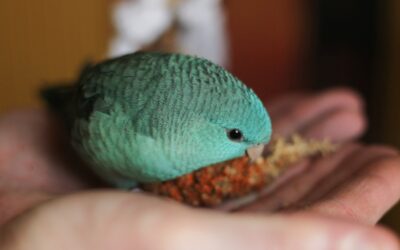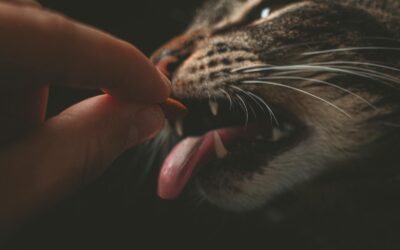Why do cats make biscuits?
Cats have long captured the fascination of pet owners and animal enthusiasts alike with their quirky behaviors and enigmatic charm. Among the myriad of curious activities, you may have noticed your feline friend engaging in one particularly adorable habit – “making biscuits.”
This endearing act of kneading with their paws is a universal trait observed in domestic cats and wild cats alike. But what drives this instinctual behavior? In this blog post, we’ll unravel the mysteries behind why cats knead, explore its various purposes, and offer insights into what this tells us about our beloved pets.

The Origins of Kneading
Kneading begins in the earliest stages of a cat’s life. When kittens nurse, they instinctively knead their mother’s teat to stimulate milk production. This rhythmic motion helps ensure a steady flow of milk, making it an essential part of their survival.
As these kittens grow into adult cats, many continue kneading as a comforting behavior, often directed towards soft surfaces like blankets or their favorite sleeping spots.
Ancestral Roots
The behavior of kneading may also be traced back to the instincts of wild cats. In the wild, cats would knead long grass or soft objects to create a comfortable sleeping spot, much like their modern-day feline friends do with blankets or plush surfaces.
This natural behavior not only provided comfort but also helped mark their territory, thanks to the scent glands located in cat’s paw pads.
Passing It On
It’s fascinating to see how the kneading action has been passed down through generations of cats, both domestic and wild.
This behavior is deeply ingrained in their DNA, with many cats displaying it even when they’re no longer nursing or living in the wild. It’s a testament to how certain instincts remain strong, regardless of the environment a cat finds itself in.

The Science Behind Cat Kneading
While kneading starts as a way to stimulate milk production, it evolves into a comforting gesture for cats. The act of kneading brings back feelings of warmth and security from their time as kittens. This is why a cat often purrs when kneading, as it’s a sign of contentment and relaxation. The repetitive motion can even release feel-good hormones, making it a natural way for cats to soothe themselves.
Scent Marking
When a cat kneads, they’re not just enjoying a soothing activity; they’re also marking their territory. Cats have scent glands in their paws, and as they knead, these glands release pheromones onto the surface they’re kneading. This scent marking communicates to other cats that a particular spot is claimed. It’s a subtle yet effective way for cats to assert their presence in their environment, whether they’re in a home or the wild.
Stretching Out
Beyond its emotional benefits, kneading serves a physical purpose too. Cats use the motion to stretch their muscles and tendons in their front paws. Just like humans stretch out in the morning, cats engage in kneading to keep their limbs limber and their bodies agile. This stretching action is particularly important for maintaining their natural hunting skills, even if their prey is just a feathered toy.
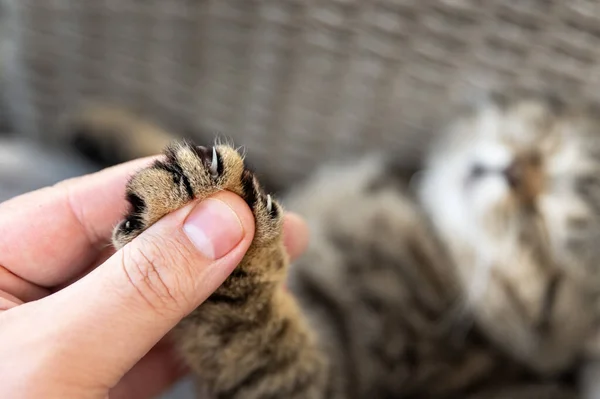
Why Your Cat is Making Biscuits on You
A Sign of Affection
If your cat has chosen you as their kneading target, consider it a compliment. When a cat kneads on a person, it’s often a sign of deep affection and trust. Much like how cats knead on their mother cat for nourishment, they see you as a source of comfort and safety. It’s a heartwarming gesture that indicates your cat feels secure in your presence and wants to bond with you.
Seeking Attention
Cats are known for their independent nature, but they also crave attention and companionship from their human companions. Kneading on you can be a way for your cat to seek attention and express their desire for interaction. Whether it’s curling up in your lap or pawing at your arm, this behavior is their way of saying, “Hey, I’m here, and I want some love!”
Finding the Perfect Spot
Cats are notoriously picky about where they rest, and kneading is part of their ritual to create the perfect cozy spot. By kneading on you, they’re essentially fluffing you up, making sure you’re as comfortable as possible for their nap. It’s a behavior rooted in their instincts to prepare a sleeping area just like their ancestors did with grass and leaves.

How to Encourage Positive Kneading Behavior
Providing Soft Surfaces
To encourage healthy kneading habits, offer your cat plenty of soft surfaces to knead on. Placing plush blankets or soft cushions around the house will give your cat ample opportunities to enjoy their natural behavior without damaging furniture or causing discomfort to you.
Keeping Claws Trimmed
While kneading is harmless, a cat’s claws can sometimes be sharp and cause discomfort. Keeping cat’s nails trimmed will help prevent any accidental scratches during kneading sessions. It’s a simple way to ensure both you and your cat can enjoy the bonding experience without any ouch moments.
Encouraging Engagement
Engage with your cat during kneading by gently petting them or speaking softly. This interaction reinforces the positive behavior and strengthens the bond between you and your feline friend. Remember, kneading is their way of communicating, so responding with affection will deepen your connection.

Best Toys and Items for Encouraging Healthy Kneading
To help your cat knead safely and healthily, providing the right toys and surfaces is essential. Here are some excellent options that can enhance their biscuit-making experience:
Plush Cat Beds
Investing in a soft surface, plush cat bed can create a perfect kneading surface for your feline friend. Look for beds filled with comfortable materials that encourage kneading while keeping their claws safe.
K&H Pet Products Self-Warming Cat Bed
Soft Blankets
A cozy blanket can become your cat’s favorite kneading spot. Choose soft, durable fabrics that can withstand frequent kneading sessions without wear.
PetFusion Reversible Cat Blanket
Catnip-Infused Toys
Toys filled with catnip can provide enjoyment and stimulation for your cat. These toys encourage kneading and play, offering both mental and physical engagement.
Cat Trees with Soft Fabrics
Cat trees with plush surfaces give your cat several areas to knead while also providing a place to climb and rest. Make sure the materials are easy to clean and comfortable for your pet.
Kneadable Cat Mats
Specially designed kneadable mats mimic the soft grounds cats would knead in the wild. These mats are often filled with natural materials that make them extra cozy.
By offering these toys and items, you not only facilitate enjoyable kneading sessions but also help ensure your cat engages in this behavior in a healthy and safe manner.

Unique Cat Personalities and Kneading
Different Strokes for Different Cats
Not all cats knead in the same way. Some prefer using only their front paws, while others alternate between both front and back paws. Each cat has their unique style of kneading, which adds to their distinct personality and charm. Observing these quirks can offer insights into your cat’s individual preferences and temperament.
Some Cats Don’t Knead
While kneading is common, not every cat engages in this behavior. If your cat doesn’t knead, it doesn’t mean they’re unhappy or not bonded with you. Just like people, cats have their own ways of showing affection and finding comfort. Look for other signs of contentment, such as purring, rubbing, or sitting close to you.
Understanding Your Feline Friend
Ultimately, understanding your cat’s kneading behavior helps you better connect with them. By observing how and when they knead, you can learn more about their emotional state and needs. This understanding enhances the bond you share and allows you to provide the best care for your beloved pet.
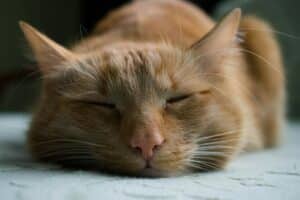
The Joy of Understanding Cat Behavior
A Window into Their World
Kneading is just one of the many fascinating behaviors that cats exhibit. By learning about what makes our furry friends tick, we gain a deeper appreciation for their unique ways of interacting with the world. Taking the time to understand their actions enriches the joy of having a cat as a companion.
Strengthening the Human-Animal Bond
Understanding cat behavior is more than just satisfying curiosity—it’s about fostering a stronger bond with your pet. By recognizing their needs and responding to their gestures, you create a harmonious relationship built on trust and communication. The more you know about your cat, the more you can nurture this special connection.
Sharing Insights with Fellow Pet Owners
As you learn more about your cat’s kneading behavior, consider sharing your insights with other cat parents. Whether it’s through online communities, social media, or local pet groups, exchanging experiences and knowledge can benefit fellow pet owners and contribute to a greater understanding of our feline friends.

Kate’s K9 Pet Care Services is here to support your kitty and we offer many cat services, check our website today!
Conclusion | Why Do Cats Make Biscuits?
In the intricate tapestry of feline behaviors, kneading stands out as a charming and multifaceted activity that speaks volumes about a cat’s instincts, emotions, and history. By understanding why cats make biscuits, we unlock a deeper connection with our feline companions, allowing us to appreciate their quirks and the ways they enrich our lives.
Whether your cat is kneading a blanket or making biscuits on your lap, it’s a beautiful reminder of the trust they place in us as their caregivers.
For those eager to explore more about the fascinating world of cats, consider joining our community of cat lovers. Share your experiences, learn from fellow pet owners, and discover new ways to enhance the bond with your furry friend. Together, let’s celebrate the joy and wonder of having cats as cherished companions.


